More than 1,600 troops and 1,000 vehicles and equipment have completed the 2,500km journey to Norway as the initial phase of Exercise Trident Juncture, say the Ministry of Defence.
Units travelled from the UK via road, rail, sea and air to the exercise area north of Oslo, according to a news release on the exercise.
The Royal Irish Battlegroup formed six separate columns for the road move with vehicles including the Husky, Foxhound and a range of logistical support vehicles. They completed the road move through six countries in five days.
According to a news release:
“The deployment for exercise Trident Juncture marks the first time the Husky and Foxhound vehicles have been utilised alongside other NATO nations outside of a desert environment. The vehicles have been resprayed green to fit in with the environment of Northern Europe. Once in location British Army soldiers have been acclimatising to the cold conditions and training with NATO allies from Norway, Denmark and Poland building up to form a multinational, combat ready brigade commanded by the British Army’s 4th Infantry Brigade HQ.
In the main exercise phase the multinational brigade will work alongside two further brigades led by Germany and Italy to combat a fictitious invading enemy force (played by Norwegian forces) in both defensive and offensive operations. It will be the largest collective defence exercise NATO has conducted in over a decade.”
Over 50,000 NATO troops from more than 30 nations are part of the exercise which takes place across land, sea and air. The exercise ensures that NATO forces are trained, able to operate together and ready to respond to any threat from any direction.
Exercise Trident Juncture continues across Norway until mid November and also involves 10,000 vehicles, 250 aircraft, and 65 ships.



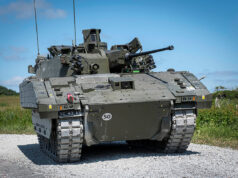
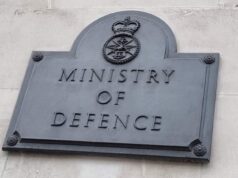
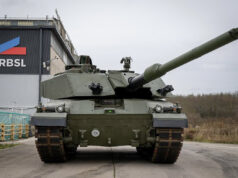
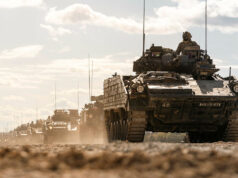
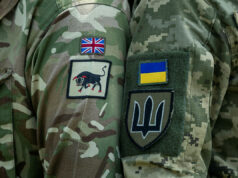
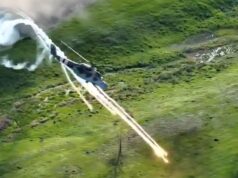

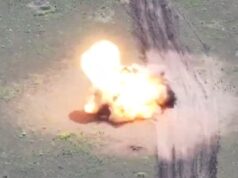

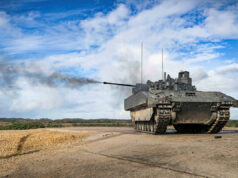

1600 troops and 1000 vehicles? I guess the army isn’t a fan of carpooling.
Lol, I was thinking the same thing! It’s a vehicle for every man and a half! Lol, maybe they expect guys cut in half from weapons….
I’m curious what role the Foxhound is being used for, whether it is standard issue for 1 RI, and the unit establishment.
The Light Protected Mobility Battalions ( of which there were meant to be 6) reverted to Light Infantry role with A2020R.
So surprised and pleased to see them in use.
I may be wrong here but I think standard operating procedure is not to issue Foxhound to light role battalions on a permanent basis but rather issue them as and when needed such as when going on ops or major exercises such as Trident Juncture.
Ah. Yes maybe.
Another James set up, more efficient the army says.
They can keep the kit centralised and only issue it when needed, meaning they then ( stealthilly) can order less of everything as the stuff gets handed out unit by unit.
But of course it’s nothing to do with that.
Presumably every unit needs transport though so it should Avoid needless decay of good kit. You can only use one vehicle at a time so it makes sens e to me
And if there is a war and you need to equip what you have properly?
You cannot because under James units are issued with kit only for training with a minimal compliment at other times.
I get what you are saying and agree if the kit is in CHE storage rather than rusting on a vehicle park in barracks it’s better for it.
But. It enables further cuts by stealth because units pass the stuff round when they need it, so there will not be enough when the shit hits the fan.
Interestingly I read that the US are looking at rolling out Polaris vehicles to their infantry. As you know I am a big fan of these and think 4 infantrymen on one of these with a GPMG /Mortar attached and loads of ammo is a game changer.
Drive, dump and fight or Swarm and cause havoc, I think this is the way forward for infantry – light and mobile, better than walking.
not a replacement for IFV, but that for me is strike. for those of a light infantry disposition it is better than the alternatives and at 20-50k a pop – we could buy loads of them.
Just a thought – whilst we are talking vehicles
My inexpert view would be better to have something that can take the load off the walking infantryman to increase range, allow units to stay in the field longer and for every section to deploy with l85a2 but the ability to deploy gpmg and Carl Gustav (with more variety of ordnance) when required.
8,000 4 person Polaris would be a game changer for UK infantry and the cost is negligible in the scale of things.
200 of these for an infantry battalion kitted out with suppressing fire and anti tank assets that get us to (and from) the fight quickly and fresh with the ammo to win, is what every infantryman would want in my opinion. It’s also something to hid behind if need be.
Not everything should be armoured / protective, sometimes agility is key.
How about agility AND protection? I suggest reading another excellent ThinkDefence article recently published on the Multi Role Vehicle (Protected) program including the JLTV. The JLTV is very fast cross country with a suspension system that protects troops so they can still fight at the end of it and has a significant level of protection.
The problem with Polaris type solutions comes right back to lack of any defensive protection and there is nothing of them to hide behind. They are fine if you can guarantee surprise in every contact but horribly vulnerable to automatic or semi-automatic fire if not, let alone any explosive ordinance. And they certainly aren’t quiet so surprise seems unlikely too.
IIRC US Special Forces have played with this approach. Going from just a vehicle, to one with a mounted weapon, to then wanting one with armour because even they cannot guarantee the element of surprise in any encounter. Do all that and it isn’t cheap anymore and way less capable than JLTV.
Yes – I think JLTV is a great vehicle and am pleased we are buying them. The Polaris solution I am proposing is for light infantry only.
This is different and the option is foot or Polaris I will take Polaris.
Strike will use the JLTV’s as will command and comms, and that is all goo, what I am proposing is something fast and agile that can carry the load for an infantryman and get them where they need to be with the weight of gear they need.
For me totally different concept, next step up is Boxer and that does belong in Strike with JLTV.
Implicit in Polaris use is a permissive environment in which to operate before dismount. That seems to be a very optimistic scenario when opposing special forces will likely be operating in numbers behind our front lines in an age of “little green men.”
Also what about the support logistics of actually getting Polaris to the fight? They won’t be driven in convey any significant distance as was just done for Trident Juncture, they’ll need their own transport vehicles which amounts to significant additional equipment.
The age of Land Rovers and Jeeps or their modern equivalents with mounted weapons should be long gone IMHO. Even Humvees fail unless up-armored beyond practicality. The UK changed the MRV-P spec in 2016 to add “The TCV [Troop Carrying Vehicle] and FPBFA [Battlefield Ambulance] variants will support the rapidly deployable forces (i.e. first-in, airborne or amphibious capability) as well as the regular armed forces.” – RM and Airborne are the very definition of a light infantry capability.
Boxer fits in the Combat vehicle role along with Ajax, MBT and the legacy tracked vehicles. JLTV is Protected Mobility so not in the same class, but the MRV-P program with JLTV addresses Foxhound, Wolfhound and could potentially address all Tactical Support roles as well, currently performed by Huskey, Panther, Jackal, Coyote and R-WMIK.
Pacman27 – Appreciate the discussion. I believe I do understand what you’re proposing, particularly if we routinely intend to load infantry with 80-120lbs of equipment, but as I attempted to illustrate wrt my observation on US Special Forces, what seems attractive in concept seems to run up against the realities of conflict. However to address your points:
Infantry can either travel with vehicles or by other means closer to theater and then link up with vehicles. The first line of this article illustrates with the personnel vs vehicle count that its mostly just drivers in the convoy for this exercise. But troops traveling by other means can be done much more efficient than having to truck large numbers of Polaris.
Not suggesting that you were replacing strike with Polaris but you did seem to indicate JLTV working in theater alongside Boxer which is what I was commenting on.
If Polaris are disposable then what about a requirement to remount infantry? Its fine getting troops to where they need to be at a particular point in time but what happens if you need to withdraw or move them them after they’ve either advanced or retreated from where they left their Polaris?
I suspect we’re going to have to agree to disagree on this but enjoyed the exchange of ideas.
Link to ThinkDefence article posted separately to avoid ending up in potential moderation purgatory or worse.
https://www.thinkdefence.co.uk/multi-role-vehicle-protected/
GHF,
I think the same could be said about infantry – how do you get them there, how do you protect them, logistics etc.
I am not replacing Strike or heavy armour with this proposal, I am mobilising light infantry and hopefully helping with the loads they carry.
Ultimately I see these vehicles as disposable, we shouldn’t get any additions to them – it literally is no different to a bicycle or motorbike from that point of view.
You are talking about something entirely different to me and a totally different type of tasking. Like everything it isn’t suitable for all environments, but it is a capability I believe the UK should have and one of the benefits of it is speed agility and ability to dismount and dump.
Over the last few days, I’ve been watching the Trident exercise in Norway and the more I watch the greater realization on just how much Europe depends on US military forces. Hovercraft, heavy lift helicopters, tanks and ground troops. Some official onlookers look smugly around at the endless demonstrations, and it’s obvious they believe the effectiveness of NATO’s collective effort.
However, do the US people realise the depth of commitment their military have to defend Europe? Would a drastic reduction in US forces place their continent in mortal danger? Is America’s real security priority on their West Coast, and the broader Pacific Ocean theater and the Far East? If the latter is the true focus, then how in the hell can the current alliance cope against a growing Russian threat?
The obvious answer is for all Europe to spend a hell of a lot more on defence to build up the forces necessary to ensure our security. The problem is the politicians can’t be bothered to do it. We’ve had Russia using chemical agents on our soil, yet we carry on sleep walking into military obscurity.
However we’re only responsible for our own military & we badly need to pull our finger out to recover lost strengths & the challange of new threats. It’s hard to see how our procurement & funding could be more shambolic than it has been.
You are right Frank62, remember the half-hearted approach toward the growing German forces in the 30’s? Churchill’s constant claims of an increasing threat from Hitler was perceived to be the utterances of a political ‘washout’ and his warnings largely ignored. The sad truth since WW2, is the lack of real respect for defence, and how it’s deemed to be an unnecessary expense. Historians always warn of ignoring the lessons of the past as a sure sign it will be repeated? I don’t believe there has been a British Prime Minister since Churchill, who showed an interest in UK defence and rarely stood in the way of Treasury cuts, even Maggy turned a blind eye before the Falkland War.
know a few lads on this fine exercise, they are thoroughly enjoying it, said it was the best organized thing they have ever been on and completely restores their faith in NATO. I have never heard such heartfelt warmth and admiration for the chain of command and the sheer organization and resourcefulness of the RLC was described by one as “breathtaking”. They are truly belonging.
BV